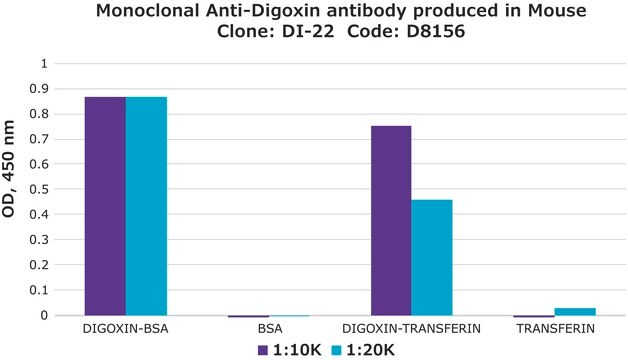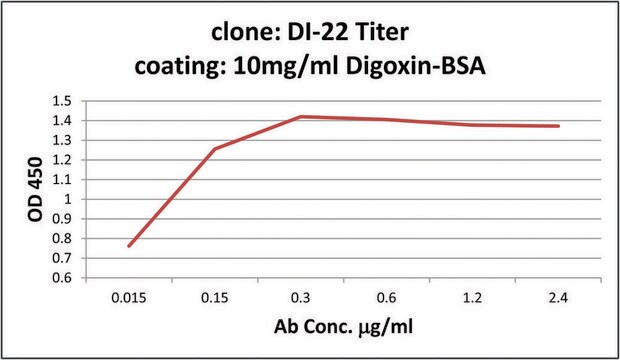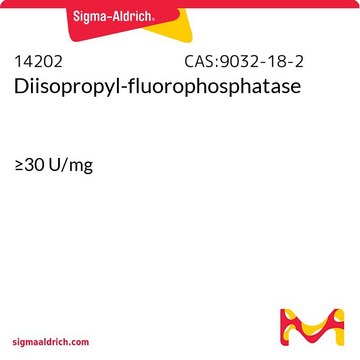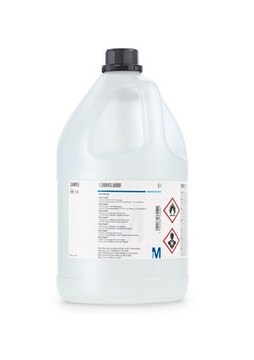B7405
Anti-Digoxin−Biotin antibody, Mouse monoclonal
clone DI-22, purified from hybridoma cell culture
Sinônimo(s):
Monoclonal Anti-Digoxin, Monoclonal Anti-Digoxin−Biotin antibody produced in mouse
About This Item
Produtos recomendados
fonte biológica
mouse
conjugado
biotin conjugate
forma do anticorpo
purified from hybridoma cell culture
tipo de produto de anticorpo
primary antibodies
clone
DI-22, monoclonal
Formulário
buffered aqueous solution
técnica(s)
indirect ELISA: 1:10,000 using digoxin-labeled biomolecule
western blot: 1:500 using using digoxin-labeled biomolecule
Isotipo
IgG1
Condições de expedição
dry ice
temperatura de armazenamento
−20°C
modificação pós-traducional do alvo
unmodified
Procurando produtos similares? Visita Guia de comparação de produtos
Categorias relacionadas
Descrição geral
Especificidade
Imunogênio
Aplicação
- in situ hybridization
- immunohistochemistry
- immunolocalization
Ações bioquímicas/fisiológicas
forma física
Exoneração de responsabilidade
Não está encontrando o produto certo?
Experimente o nosso Ferramenta de seleção de produtos.
Código de classe de armazenamento
10 - Combustible liquids
Classe de risco de água (WGK)
nwg
Ponto de fulgor (°F)
Not applicable
Ponto de fulgor (°C)
Not applicable
Escolha uma das versões mais recentes:
Já possui este produto?
Encontre a documentação dos produtos que você adquiriu recentemente na biblioteca de documentos.
Os clientes também visualizaram
Nossa equipe de cientistas tem experiência em todas as áreas de pesquisa, incluindo Life Sciences, ciência de materiais, síntese química, cromatografia, química analítica e muitas outras.
Entre em contato com a assistência técnica








